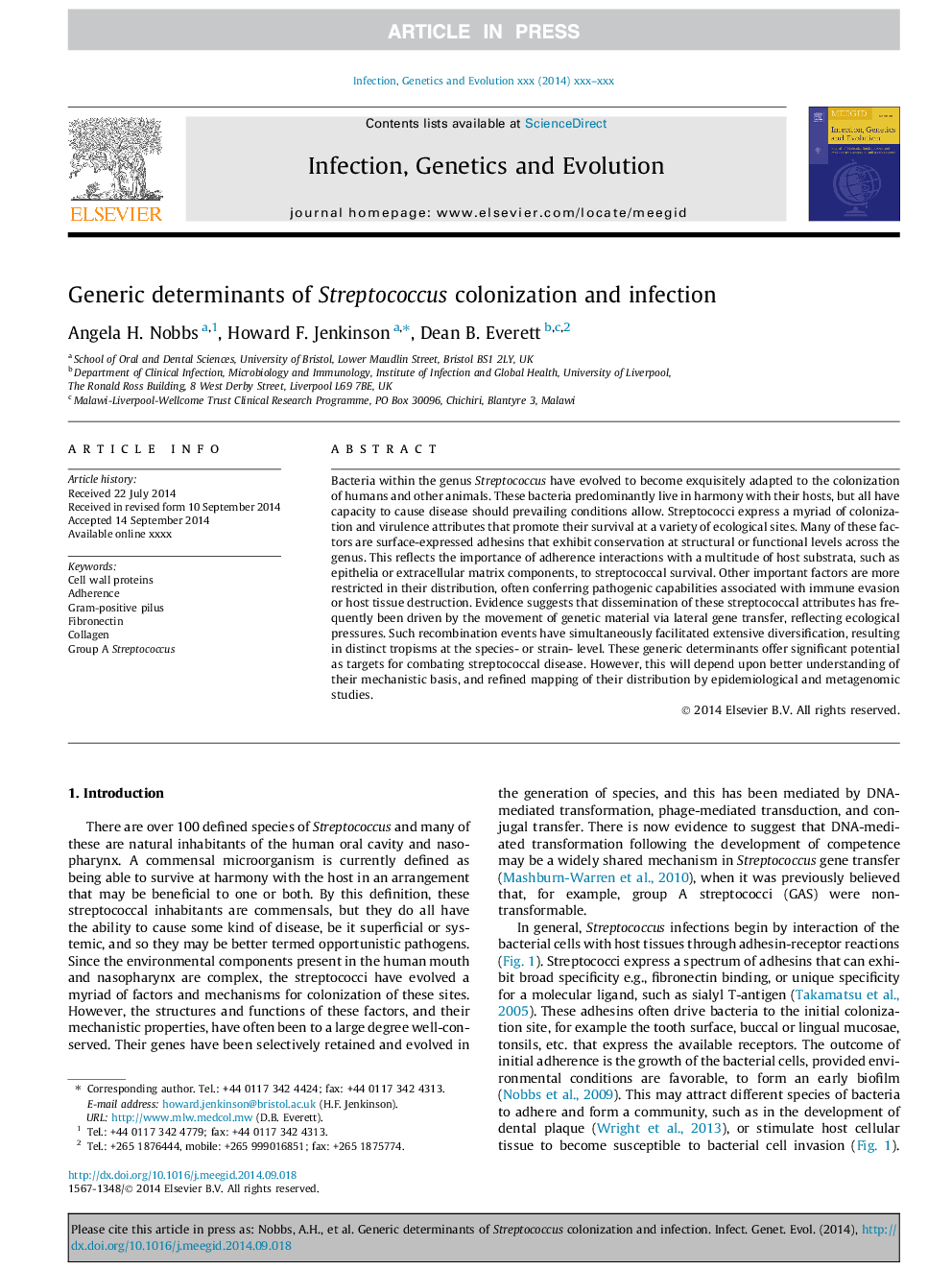| کد مقاله | کد نشریه | سال انتشار | مقاله انگلیسی | نسخه تمام متن |
|---|---|---|---|---|
| 5908940 | 1570170 | 2015 | 10 صفحه PDF | دانلود رایگان |
عنوان انگلیسی مقاله ISI
Generic determinants of Streptococcus colonization and infection
ترجمه فارسی عنوان
عوامل تعیین کننده کلونیزاسیون استرپتوکوک و عفونت
دانلود مقاله + سفارش ترجمه
دانلود مقاله ISI انگلیسی
رایگان برای ایرانیان
کلمات کلیدی
ترجمه چکیده
باکتری ها درون جنس استرپتوکوک ها تکامل یافته و به شدت با استعمار انسان و سایر حیوانات سازگار هستند. این باکتری ها عمدتا در هماهنگی با میزبان خود زندگی می کنند، اما همه آنها دارای توانایی برای ایجاد بیماری می باشند. استرپتوکوک ها تعداد زیادی از ویژگی های کلونیزاسیون و ویروسی شدن را بیان می کنند که بقای آنها را در انواع مختلف محیط زیست افزایش می دهد. بسیاری از این عوامل، چسبندگی سطحی هستند که محافظت در سطوح ساختاری یا عملکردی در سراسر جنس را نشان می دهند. این نشان دهنده اهمیت تعاملات پیوستگی با بسیاری از زیرمجموعه های میزبان، مانند اپیتلیا یا اجزای ماتریکس خارج سلولی، برای بقای استرپتوکوک است. سایر عوامل مهم در توزیع آنها بیشتر محدود می شود، که اغلب باعث ایجاد قابلیت های بیماریزا در ارتباط با تخریب ایمنی و یا تخریب بافت میزبان می شود. شواهد نشان می دهد که انتشار این ویژگی های استرپتوکوک اغلب از طریق انتقال مواد ژنتیکی از طریق انتقال ژن جانبی، منجر به فشارهای محیطی شده است. چنین حوادث تجدید حیات به طور همزمان موجب تنوع گسترده ای شده است که منجر به کشفیات متمایز در سطح گونه و یا کرنش می شود. این عوامل تعیین کننده عمومی به عنوان اهداف برای مبارزه با بیماری استرپتوکوک ارائه می دهند. با این وجود، این بستگی به درک بهتر مبانی مکانیکی و نقشه برداری توزیع آنها توسط مطالعات اپیدمیولوژیک و مت ژنومیک دارد.
موضوعات مرتبط
علوم زیستی و بیوفناوری
علوم کشاورزی و بیولوژیک
بوم شناسی، تکامل، رفتار و سامانه شناسی
چکیده انگلیسی
Bacteria within the genus Streptococcus have evolved to become exquisitely adapted to the colonization of humans and other animals. These bacteria predominantly live in harmony with their hosts, but all have capacity to cause disease should prevailing conditions allow. Streptococci express a myriad of colonization and virulence attributes that promote their survival at a variety of ecological sites. Many of these factors are surface-expressed adhesins that exhibit conservation at structural or functional levels across the genus. This reflects the importance of adherence interactions with a multitude of host substrata, such as epithelia or extracellular matrix components, to streptococcal survival. Other important factors are more restricted in their distribution, often conferring pathogenic capabilities associated with immune evasion or host tissue destruction. Evidence suggests that dissemination of these streptococcal attributes has frequently been driven by the movement of genetic material via lateral gene transfer, reflecting ecological pressures. Such recombination events have simultaneously facilitated extensive diversification, resulting in distinct tropisms at the species- or strain- level. These generic determinants offer significant potential as targets for combating streptococcal disease. However, this will depend upon better understanding of their mechanistic basis, and refined mapping of their distribution by epidemiological and metagenomic studies.
ناشر
Database: Elsevier - ScienceDirect (ساینس دایرکت)
Journal: Infection, Genetics and Evolution - Volume 33, July 2015, Pages 361-370
Journal: Infection, Genetics and Evolution - Volume 33, July 2015, Pages 361-370
نویسندگان
Angela H. Nobbs, Howard F. Jenkinson, Dean B. Everett,
